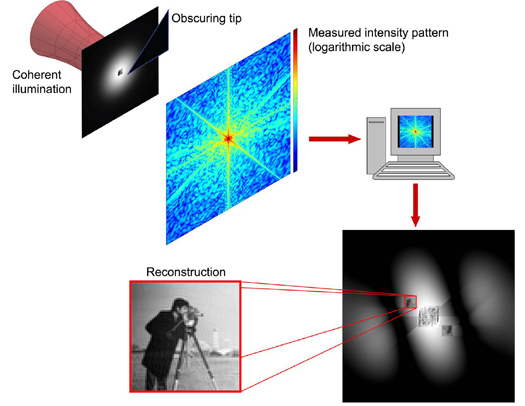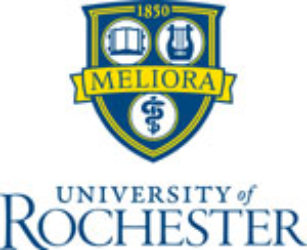Manuel Guizar-Sicairos’ Research
Phase retrieval for x-ray coherent lensless imaging
Application of phase retrieval algorithms is a very active area of research for lensless imaging at x-ray wavelengths. The small wavelength and high penetration depth of x-rays makes them very attractive for high resolution imaging (on the order of a few nanometers) of biological and material science specimens. However, the difficulty in fabricating good quality focusing optics for these wavelengths limits the application of conventional imaging.

The image above shows an example implementation of coherent lensless imaging (also known as coherent diffractive imaging). A coherent monochromatic plane-wave, limited by an aperture, is incident on an object of interest (image of rodent courtesy of brainmaps.org). The field transmitted by the object propagates in free space and is measured by a detector array (typically a CCD detector).
Through this measurement we directly obtain the field intensity, but in order to reconstruct an image one must also recover the phase of this field. The measured intensity pattern is fed to an iterative phase retrieval algorithm (along with a set of constraints on the object) to recover the phase associated with the measured intensity and computationally reconstruct a diffraction-limited image. In this sense, phase retrieval algorithms are used as computational lenses.
My research is mainly focused on the development and testing of new phase retrieval and image reconstruction algorithms.
Holography with a boundary-wave reference using HERALDO
Holography with extended reference by autocorrelation linear differential operation (HERALDO) is a non-iterative coherent lensless imaging technique that allows using the boundary-wave from a sharp feature on an extended reference as a holographic-like reference wave.
HERALDO, a generalization of an earlier approach by S. G. Podorov et al. and Fourier transform holography, can reconstruct the complex-valued transmissivity of an object in a non-iterative fashion through the application of a set of derivatives on the field autocorrelation.

The image above shows an example setup for reconstruction using HERALDO. The object is flood illuminated and a sharp tip is inserted in the path of the beam. The far-field intensity pattern is measured with a detector array. The reconstructed image is directly computed from the far-field intensity.
This approach is robust to noise and is fast and simple to implement. We continue investigating experimental scenarios and sample geometries for which using HERALDO is advantageous compared to other lensless imaging techniques.
